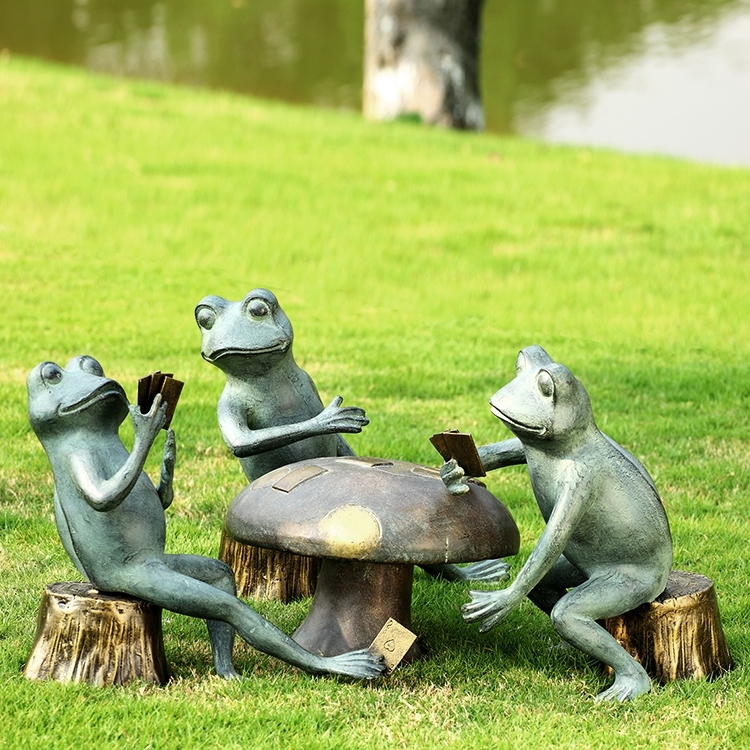A complete group of playing cards is called a pack in the UK, a deck in the US, or a set which is a pretty universal term. That's what we call it in Lily Pad...a set of cards. The common set of cards can be used for many different types of card games and seems to have originated from sets of cards first used in Mamluk (15th century) Egypt. The set of cards are divided into four suits, each with face cards and numbered or "pip" cards. That's a term that was new to me. The general consensus is that playing cards was invented in Imperial China, as early as the 9th century Tang China (618-907). The first reference to card games also dates from the 9th century. It was referred to as "leaf" game. The first "pack" of cards ever printed may well have been a 32-card Chinese domino pack, in whose cards all 21 combinations of a pair of dice were depicted. The experts agree that in the earliest references to card games, it difficult to tell if they are referring to paper cards or to gaming tiles. The Chinese word "pai" is used to describe both. William Henry Wilkinson suggests that the first paper playing cards may have been actual currency. Because using paper money was inconvenient (especially if you didn't have any) and risky, real currency was substituted with play money called 'money-suited cards.' The money-suited system was based on denominations of currency and not on pips or pictures.
It is not known when paying cards arrived in Persia but it was probably around the 13th century. In India, current sets of cards have 8, 10, or 12 suits; some have as many as 32! The Indians also converted the rectangular cards to circular ones. By the 11th century, card games had traveled from Asia to Egypt. The oldest surviving cards in the world are four fragments found in the Keir Collection and one in the Benaki Museum. They are dated to the 12th and 13th centuries. A near complete set of Mamluk playing cards, dating to the 15th century (and of similar appearance to the fragments) was discovered in Istanbul in 1939.
Playing cards first entered southern Europe in the 14th century and probably used the Mamluk suits of cups, coins, swords, and polo-sticks. A 1369 Paris city ordinance does not mention playing cards, but the 1377 update does. The earliest cards were made by hand. Printed woodcut decks appeared in the 15th century. Back in those days, playing cards even competed with devotional images as the most common use of woodcuts. The Flemish Hunting Deck, held by the Metropolitan Museum of Art is the oldest complete set of ordinary playing cards made in Europe from the 15th century. As cards spread from Italy to Germany, the Latin suits were replaced with suits of Leaves (shields), Hearts (or roses), Bells, and Acorns. In the late 14th century, Europeans replaced the Mamluk court (face) cards to represent European royalty and attendants. In England, the lowest court card was a Knave, or male child...possibly a prince. Queens appear sporadically in packs dating from 1377, especially in Germany. Although the Germans abandoned the Queen card before the 1500s, the French permanently picked it up and placed it beneath the King.
Over the years, many changes have been made to the common playing card. Most notably, the corners were made round since sharp corners worn out more quickly and could reveal the cards value. Before the mid-19th century, British, American, and French players preferred cards with a blank back. But the need to hide wear and tear, and to discourage writing on the back, led to cards having a a back side that was decorated with patterns, pictures, photos, and even advertising. The United States added the Joker to the deck of cards. It was devised for the card game Euchre, which spread from Europe to America after the Revolutionary War. The joker was invented c 1860 as the third trump card. The name is believed o be derived from Juker, a variant name for Euchre. The earliest reference to the Joker as a wild card dates to 1875 with a variation of poker.
There's a long and interesting history to card games and it's fun to know a little of where and how it all began. Spending some quality time with my "peeps' is a pleasant way to while away a Friday evening, too. Whatever your plans, have fun and remember to stay safe.
I hope to see you all back here on Monday!

 RSS Feed
RSS Feed